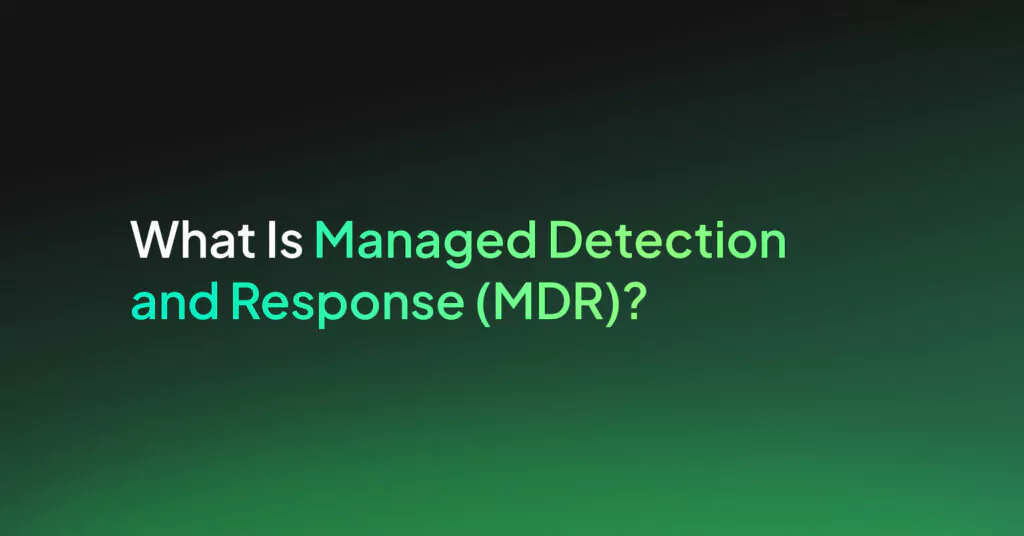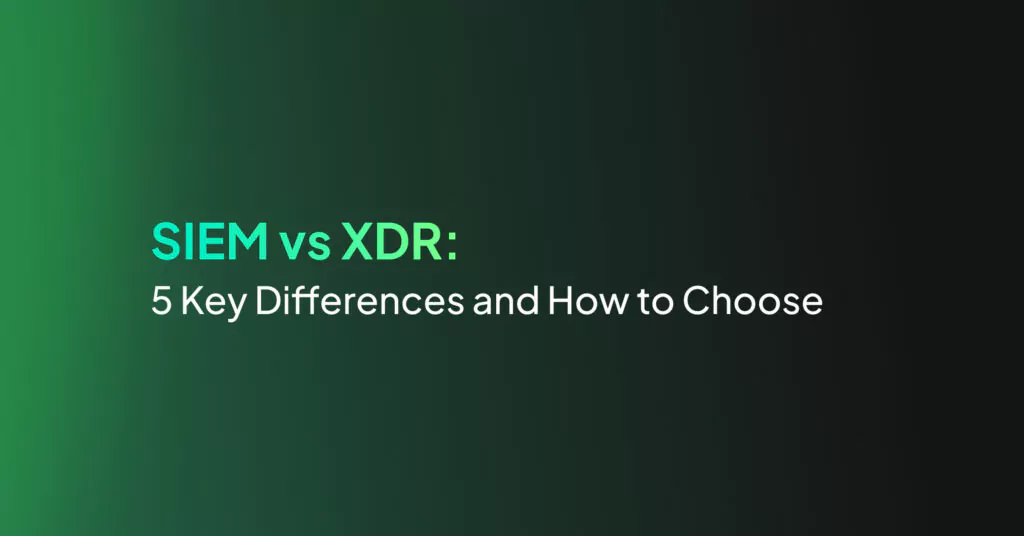SIEM vs EDR: 4 Key Differences and Using Them Together

Key Capabilities of SIEM
Security information and event management platforms provide organizations with threat detection and response capabilities. Here are the key capabilities that make SIEM systems indispensable in modern cybersecurity:
- Log collection and aggregation: Collects logs from a range of sources, such as firewalls, servers, applications, and network devices, centralizing data for easier analysis.
- Real-time monitoring and alerting: Continuously monitors network activity to identify unusual patterns and generates alerts in real time for immediate response.
- Correlation and analysis: Uses rule-based or machine learning algorithms to correlate data from different sources, detecting complex attack patterns that isolated systems might miss.
- Incident investigation and forensics: Provides tools for detailed incident analysis, enabling security teams to trace the source, scope, and impact of breaches effectively.
- Compliance and reporting: Maintains comprehensive log archives and generates compliance reports to meet regulatory requirements, such as GDPR, HIPAA, and PCI DSS.
- Threat intelligence integration: Incorporates external threat intelligence feeds to improve the system’s ability to detect emerging threats and vulnerabilities.
Related content: Read our guide to SIEM architecture
Key Capabilities of EDR
Endpoint detection and response solutions focus on identifying and mitigating endpoint-specific threats. The following capabilities highlight how EDR systems protect devices and improve response to incidents:
- Continuous endpoint monitoring: Collects and analyzes endpoint data in real time, ensuring continuous visibility into device activity and potential threats.
- Behavioral threat detection: Uses machine learning and behavioral analysis to identify deviations from normal patterns, detecting unknown or zero-day threats.
- Threat containment and isolation: Provides tools to quarantine compromised endpoints or processes, preventing further damage while investigations are underway.
- Automated incident response: Automates remediation steps, such as removing malware or restoring files, to reduce response times and mitigate impact.
- Threat hunting: Supports proactive hunting for potential threats using detailed logs and advanced search capabilities across endpoints.
- Endpoint forensics and analysis: Offers in-depth tools for investigating security incidents, helping teams understand root causes and improve defenses.
SIEM vs. EDR: Key Differences
1. Purpose and Focus
SIEM is broad, covering the entirety of an organization’s IT systems, continuously aggregating and analyzing logs from a wide range of sources to provide a comprehensive view of network activity. Its purpose is to correlate events across systems, offering a macro view vital for detecting strategic-level threats and compliance reporting.
EDR zeroes in on endpoints, offering granular insights into activities at the device level. Its primary role is real-time threat detection and response on these endpoints, protecting individual devices. EDR focuses on micro-level activities, providing detailed insights from endpoints to detect and counteract sophisticated threats in real time, complementing the broader network view provided by SIEM systems.
2. Data Handling and Analysis
In data handling, SIEM merges and standardizes logs from diverse sources, creating a centralized repository for analysis. This enables pattern recognition across an organization’s IT landscape. SIEM platforms are adept at handling large data volumes, utilizing complex algorithms to highlight potential security incidents or policy violations, generally through historical data analysis.
EDR emphasizes active and ongoing data collection from endpoints. It operates by running agents directly on devices to monitor real-time activities, ensuring up-to-the-minute data is available for threat detection and response. EDR systems focus heavily on automation and behavioral analysis, analyzing live data to identify anomalies and threats swiftly at the endpoint level, enabling agile response times.
3. Response and Remediation
SIEM systems excel at alerting security teams to potential threats, generally requiring human intervention for remediation. They are not typically equipped with direct threat remediation capabilities but provide critical data that informs security actions. SIEM alerts guide teams on broader strategy actions, such as patch management or firewall changes based on detected threats.
EDR tools are built for swift response actions, often executing automated remediation to isolate threats at the endpoint level immediately. They can quarantine compromised files or rollback systems to pre-breach states without human intervention. This automation enables EDR systems to stop threats in their tracks, limiting potential damage while the security team evaluates the broader impact.
4. Integration and Scalability
SIEM systems provide a central integration point for various security tools and technologies, allowing scalability as organizational needs grow. They can integrate with threat intelligence platforms, IT service management, and other vital interfaces. Their scalability ensures they can handle increasing data volumes as enterprises expand.
EDR platform scalability comes from its ability to cover a vast number of endpoints efficiently, regardless of geographical distribution. EDR solutions deploy their agents across numerous and diverse devices. This ensures that, even as networks expand with new endpoints, there is consistent protection without degradation in performance.
SIEM and EDR: Better Together?
SIEM and EDR are not mutually exclusive; rather, they complement each other by addressing different aspects of an organization’s security posture. Together, they form a comprehensive defense strategy, bridging the gap between macro-level visibility and micro-level endpoint protection.
SIEM systems excel at aggregating and analyzing data across the IT infrastructure, offering insights into network-wide activities and correlations. This broad scope helps identify sophisticated attack patterns that span multiple systems. However, SIEM often relies on endpoint-level visibility to provide detailed context about specific devices involved in security incidents. This is where EDR steps in.
EDR improves the overall security framework by offering granular visibility into endpoints, ensuring that threats originating or operating at the device level are detected and remediated in real time. While SIEM detects and alerts on threats across the broader network, EDR isolates and mitigates threats at their source, ensuring quicker response times.
Integration between SIEM and EDR creates a feedback loop that strengthens both systems. Data collected from EDR agents can be fed into SIEM platforms for more accurate correlation and analytics, while SIEM’s broad insights can help refine EDR detection rules and response strategies. This synergy improves threat detection accuracy, shortens response times, and minimizes the risk of breaches.
Managed SIEM with Coralogix
Coralogix sets itself apart in observability with its modern architecture, enabling real-time insights into logs, metrics, and traces with built-in cost optimization. Coralogix’s straightforward pricing covers all its platform offerings including APM, RUM, SIEM, infrastructure monitoring and much more. With unparalleled support that features less than 1 minute response times and 1 hour resolution times, Coralogix is a leading choice for thousands of organizations across the globe.





